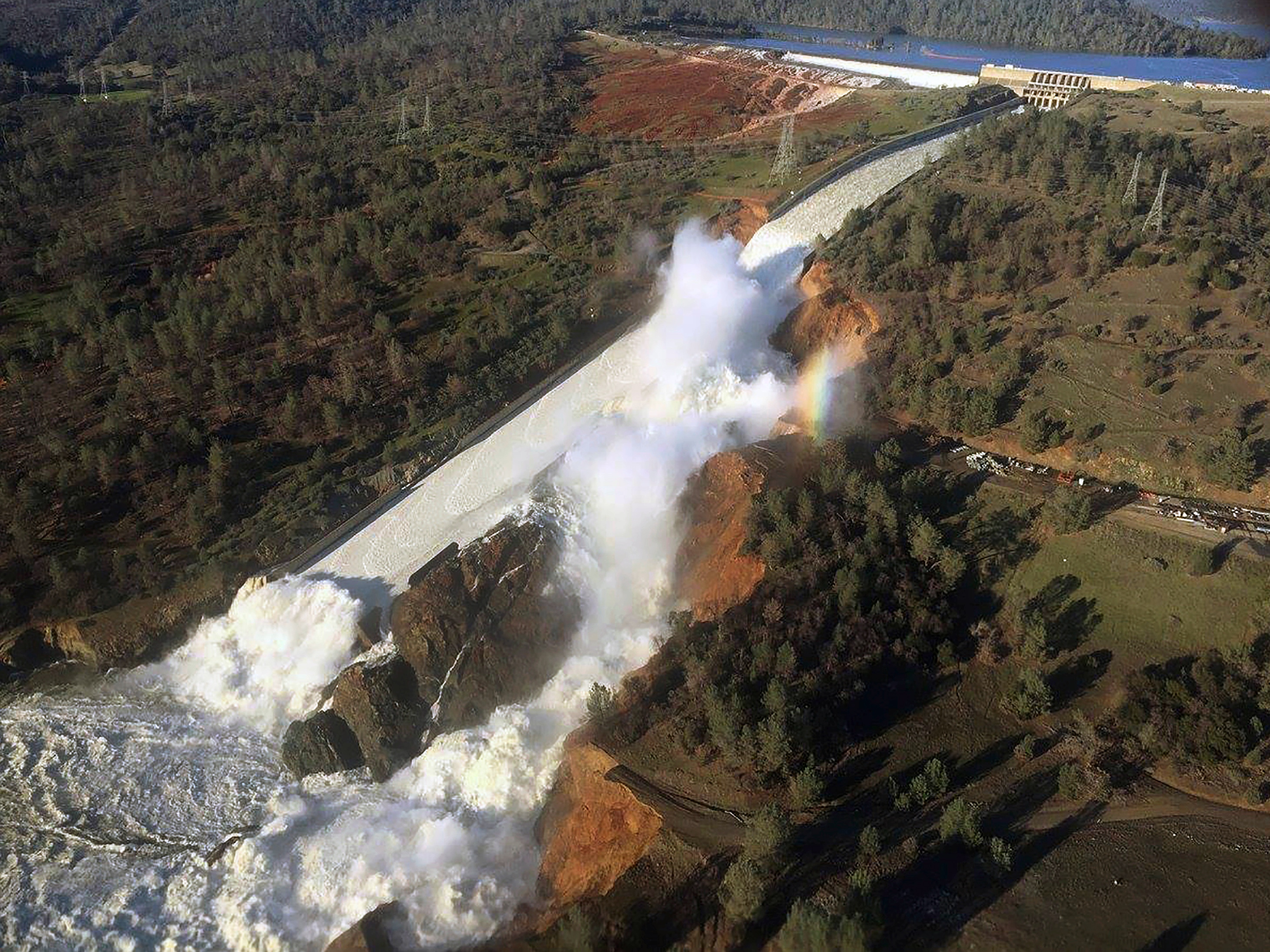Following weeks of torrential rain in mid February, which caused water levels in Lake Oroville in California’s Gold Country to overflow, authorities were forced to utilize the Oroville Dam’s emergency spillway to accommodate the 100,000 cubic feet of water spewing out of the lake. The dam was built 49 years ago and stands as the tallest in the country at 770 feet. In addition to a main spillway, the dam has an emergency spillway to be used if the main channel overflows. Officials initially predicted that the emergency spillway could handle 32-58 hours of water flow. However, after less than 24 hours of rain, the spillway began to show signs of collapsing. The copious amounts of water had caused it to erode, forming a hole 250 feet long and 45 feet wide. The National Guard had to work quickly, using helicopters to drop tons of boulders into the dam. The complete collapse of the spillway would have resulted in a 30-foot wall of water flooding into the surrounding residential areas including Oroville, Yuba City, Marysville, and Plumas Lake. In the meantime, nearly 200,000 residents were evacuated. In the midst of the chaos, fleeing residents became the targets of petty crime, such as carjackings, burglaries, and ransackings of empty storefronts.
In order to prevent further damage to the spillway and remove debris that had accumulated in the Hyatt Powerhouse hydroelectric plant, engineers were required to decrease the amount of water being pumped out of Lake Oroville. In the meantime, the underground plant was forced to close, resulting in power outages across the county.

With the effects of the damage being felt throughout the state, controversy arose regarding the initial construction of the dam and its preparedness for such weather patterns. Some have criticized officials, saying they had been warned that building the emergency spillway into a dirt hillside was unsafe. Others, however, have defended the California Department of Water Resources (DWR), claiming that the construction of the spillway was a calculated risk made on the assumption that such extreme weather conditions were unlikely to occur.
According to Noah Diffenbaugh, professor of Earth System Science in the Stanford School of Earth, Energy & Environmental Sciences and the Kimmelman Family Senior Fellow at the Stanford Woods Institute for the Environment, “What’s happening now is very much in line with our recent research analyzing the historical climate record and projections of future climate change. It’s really an issue of extremes. The basin upstream of Oroville Dam is at a record 224 percent of normal precipitation, and we are witnessing what happens when so much precipitation falls in such a short amount of time.”
Furthermore, with limited money in the DWR’s budget, decisions had to be made about which California dams could be reinforced. Newsha Ajami, director of urban water policy at Stanford’s Water in the West Program, lamented, “While I know my colleagues in the transportation and energy sectors might not fully agree, people are much more willing to pay for the upkeep and maintenance of roads, bridges or energy transmission lines than our water system. This is partly because water is a hidden system and people are disconnected from our complex and sophisticated water network.”
Money continues to be an issue as the state investigates options for repairing the dam. Sources estimate that the damage will cost between $100 million and $200 million to repair. Repairs would include rebuilding the main spillway and reinforcing the emergency spillway with concrete. Governor Brown has written to the White House, detailing the catastrophe and asking for federal funding in order to aid those displaced by it.

Governor Brown did not ask for money to fix the Oroville dam spillway, though it seems as though federal funding is one of the state’s only options. One possible avenue for funding is President Obama’s Water Infrastructure Improvements for the Nation Act (WIIN), which set aside $12 billion in federal spending for water projects throughout the nation. The main issue with this route is that the cost of making the needed repairs across the country totals more than $57 billion. Not to mention, such a bill may be in jeopardy under President Trump, who has threatened to halt EPA grants and agreements that aid federal funding for water projects.
Nevertheless, the White House has acknowledged the need for infrastructure repairs across the country. The state can only hope that such construction will become a nationwide priority. For now, the main focus is helping evacuees return to their normal lives and figuring out how to prevent incidents like this from occurring in the future.







